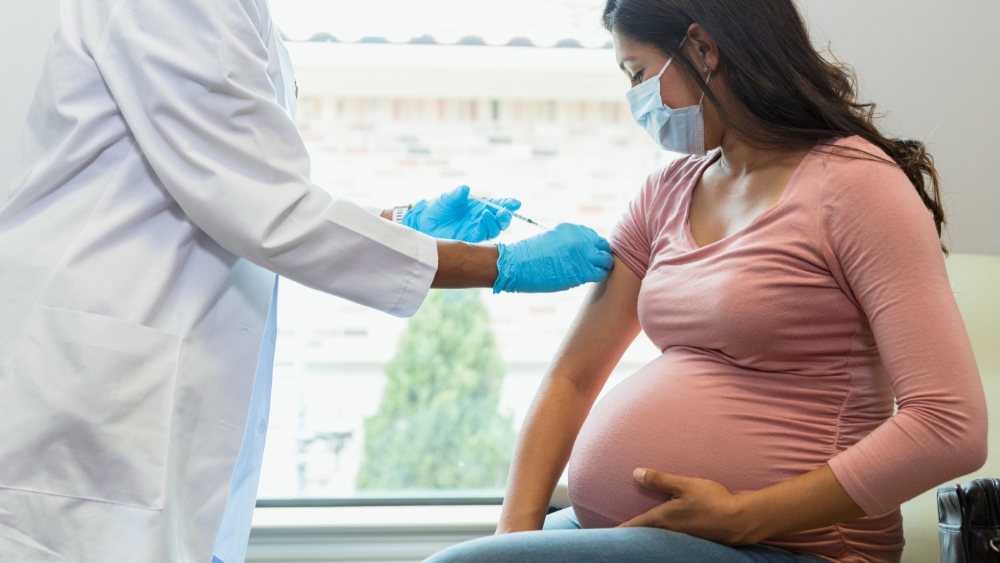
Updated COVID-19 boosters that target SARS-CoV-2 and the most common Omicron subvariants are now available.

Updated COVID-19 boosters that target SARS-CoV-2 and the most common Omicron subvariants are now available.
What you need to know
In late 2021, the Omicron variant of SARS-CoV-2 led to a spike in COVID-19 cases due to the variant’s increased transmissibility. Omicron remains the dominant SARS-CoV-2 variant, and several subvariants of Omicron are even more transmissible.
To combat the spread of Omicron, the Centers for Disease Control and Prevention (CDC) recommended that people receive a booster dose of a COVID-19 vaccine: a third dose for people who had had an mRNA vaccine (Moderna or Pfizer-BioNTech) or a second dose for people who had had the viral vector vaccine (Johnson & Johnson).
At that time, only COVID-19 vaccines targeting the original SARS-CoV-2 were available. The CDC now recommends that people age 12 and older receive a booster dose of an updated, bivalent mRNA COVID-19 vaccine that targets both SARS-CoV-2 and two dangerous Omicron subvariants.
Researchers wanted to understand how long immunity against the Omicron variant lasted after people received a booster dose of an original COVID-19 vaccine. They also wanted to know whether different combinations of primary vaccinations and booster shots created a better, longer-lasting immune response.
What did the researchers do?
Researchers enrolled adult participants who had received both their primary COVID-19 vaccine series and a booster dose of an original COVID-19 vaccine. Approximately 50 people were sampled from each of these six groups:
-
People who received full doses of the Moderna vaccine for their primary vaccine series and booster dose
-
People who received a full dose of the Moderna vaccine for their primary vaccine series and a half-dose of the Moderna vaccine for their booster dose
-
People who received the Pfizer-BioNTech vaccine for their primary vaccine series and booster dose
-
People who received the Johnson & Johnson vaccine for their primary vaccine series and booster dose
-
People who received the Johnson & Johnson vaccine for their primary vaccine series and the Pfizer-BioNTech vaccine for their booster dose
-
People who received the Pfizer-BioNTech vaccine for their primary vaccine series and the Johnson & Johnson vaccine for their booster dose
The average time between a participant’s primary vaccine series and booster dose ranged from 16.4 to 28.5 weeks.
Researchers found that booster doses of both the mRNA and viral vector vaccines created high levels of neutralizing antibodies against the Omicron BA.1 subvariant. The lowest antibody levels were seen in people who received the viral vector vaccine as their primary and booster vaccines.
However, antibody levels against Omicron and its subvariants significantly decreased during the three months after the booster dose, regardless of type. Additionally, Omicron variants such as BA.5 (the dominant subvariant as of September 2022) were less susceptible to neutralizing antibodies from both the mRNA and viral vector booster doses.
This research was supported in part by the National Institute of Allergy and Infectious Diseases (NIAID).
Why is this research important?
The results of this study support real-world data that shows that people vaccinated and boosted with an original COVID-19 vaccine are more susceptible to Omicron and its subvariants than to other variants of SARS-CoV-2.
The research also underscores the need for variant-specific booster vaccines. In order to be as protected against COVID-19 as possible, people should get fully vaccinated and receive a dose of an updated booster.
Where can I go to learn more?
FDA Authorizes Moderna, Pfizer-BioNTech Bivalent COVID-19 Vaccines for Use as a Booster Dose
- The U.S. Food and Drug Administration has amended its emergency use authorizations for the Moderna and Pfizer-BioNTech COVID-19 vaccines to authorize updated bivalent boosters.
Vaccine-Induced Immune Response to Omicron Wanes Substantially Over Time
-
NIAID funded a study to understand how the original COVID-19 booster vaccines respond to the Omicron variant and which combination of primary and booster vaccines create the best immune response.
SARS-CoV-2 Variant Classifications and Definitions
-
CDC explains how SARS-CoV-2 variants arise and how these variants are categorized and tracked.
Sources
Lyke, K. E., Atmar, R. L., Islas, C. D., Posavad, C. M., Szydlo, D., Chourdhury, R. P., Deming, M. E., Eaton, A., Jackson, L. A., Branche, A. R., El Sahly, H. M., Rostad, C. A., Martin, J. M., Johnston, C., Rupp, R. E., Mulligan, M. J., Brady, R. C., Frenck, R. W., Jr, Bäcker, M., Kottkamp, A. C., … DMID 21-0012 Study Group. (2022). Rapid decline in vaccine-boosted neutralizing antibodies against SARS-CoV-2 Omicron variant. Cell Reports Medicine, 3(7), 100679. https://doi.org/10.1016/j.xcrm.2022.100679

News and Stories
Read stories about the efforts underway to prevent, detect, and treat COVID-19 and its effects on our health.
 An official website of the United States government
An official website of the United States government

